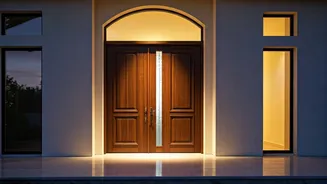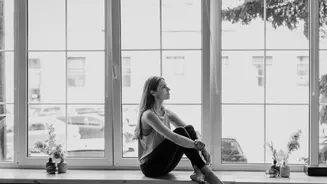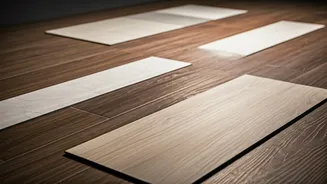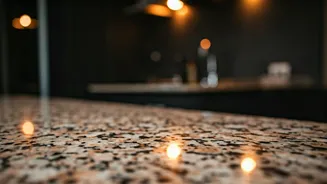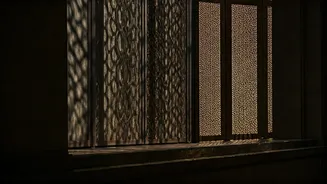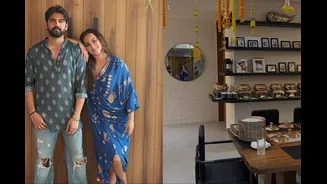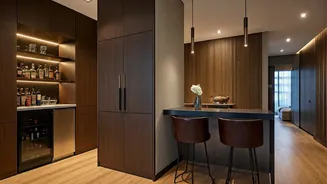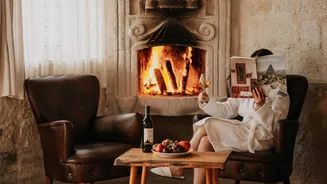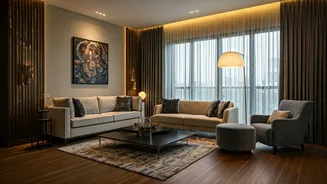Main Door Essentials
The main door is more than just an entry point; it's a statement. Selecting the right design involves considering several factors, including the architectural
style of your home, personal preferences, and security needs. The primary purpose of a main door is to ensure security, which is why a robust build with quality materials is key. However, it also serves an aesthetic function. The front door sets the tone for your entire home. Materials like solid wood offer classic appeal, while options like metal or glass inserts can add a contemporary touch. Trends evolve, so staying updated can help you create a modern, welcoming entrance. For instance, the use of a wooden main door with a steel handle and glass sides has become very popular. Always consider factors like door size and opening direction to ensure the door aligns with both the aesthetic and functional design of your home. Before selecting a door, carefully evaluate all available options to make the best choice.
Diverse Design Styles
Exploring the different main door designs available helps in finding a perfect match for your home. Options span a vast spectrum, including traditional, modern, and even artistic designs. For those preferring classic aesthetics, consider vintage timber doors or antique Rajasthani designs. Modern homes might benefit from designs that incorporate glass panels, patterned grills, or even sliding doors. The contemporary trend incorporates colors and materials, and options like black, green, mint, or blue doors are available. Some designs offer a combination of materials, such as wood and glass, while others feature intricate hand-carved details or circular textures. These varied styles provide the opportunity to personalize your home’s entrance, reflecting your taste and enhancing your home's unique character. When considering your choice of style, remember to consider the overall theme of your home, and that all design choices should complement each other.
Materials Matter Most
The materials used for your main door determine its durability, appearance, and maintenance requirements. Solid wood doors are a timeless choice, offering warmth and natural beauty, while also providing excellent insulation. Metal doors, often made of steel or iron, are known for their strength and security, making them suitable choices. Glass doors or doors with glass panels can create a modern look, allowing natural light to enter the home. The type of wood and metal used is another important aspect to consider. For example, teak is known as the best wood to use for the front door. The choice of material should also consider the local climate. For example, in regions with high humidity, materials resistant to moisture are preferable. Consider the level of security offered by various materials. Doors with solid construction and strong frames can deter potential intruders. Understanding the properties of each material enables you to select the best option, meeting both your functional and aesthetic requirements.
Color and Vastu
Color plays a vital role in door design, influencing the home’s curb appeal and overall aesthetic. The color of your main door should complement the exterior of your house, providing a welcoming look. Consider whether you want the front door to be lighter or darker than the house itself. The choice influences your home's ambiance. In addition to aesthetic considerations, Vastu Shastra provides guidelines for selecting colors and designs for the main door. Certain colors and elements are associated with specific energies and directions, which may impact your home's harmony. For example, red is often considered auspicious. Some Vastu tips also suggest specific directions for door placement, which can influence how energy flows through the home. Adhering to Vastu principles may enhance positive energy flow, which is believed to enhance the well-being of the residents. While aesthetics should be considered, integrating Vastu principles can provide harmony.
Beyond the Door
While the main door is key, enhancing your entryway extends beyond it. Consider the other design elements that can improve the aesthetics of your home. False ceilings, such as those made from PVC or gypsum, can add a layer of sophistication to living rooms, bedrooms, and even kitchens. Various lighting options can enhance the overall design of your space. Wall sconces are an example of this. The design choices should extend to all elements. Color schemes also play an important role, with options such as double-tone wardrobes. These additional elements, like the living room TV unit and the kitchen cabinet design, enhance the home's overall design. The goal is to bring all of these different components together. These components can transform your living space, enhancing comfort and aesthetic appeal. The result should be a beautiful and inviting home.
Budget and Planning
Budget planning is a crucial part of any home design project. The expense for various components, from main door designs to kitchen cabinets, can vary significantly depending on the materials and complexity. Before starting, it's useful to set a budget, taking into consideration costs for doors, false ceilings, and other design elements. There are budget-friendly options available that don't compromise on style. Low-budget designs are available for bedrooms, kitchens, and living rooms. This also applies to items such as wash basins and other home decor. It's smart to explore multiple ideas and compare prices to ensure the design remains within your budget. Consulting with professionals helps you identify potential hidden charges. Proper planning helps avoid overspending and guarantees a smooth home decor process, resulting in a stylish and functional home that aligns with your resources.
